20+ Moments That Remind Us That Kindness Costs Nothing but Means Everything

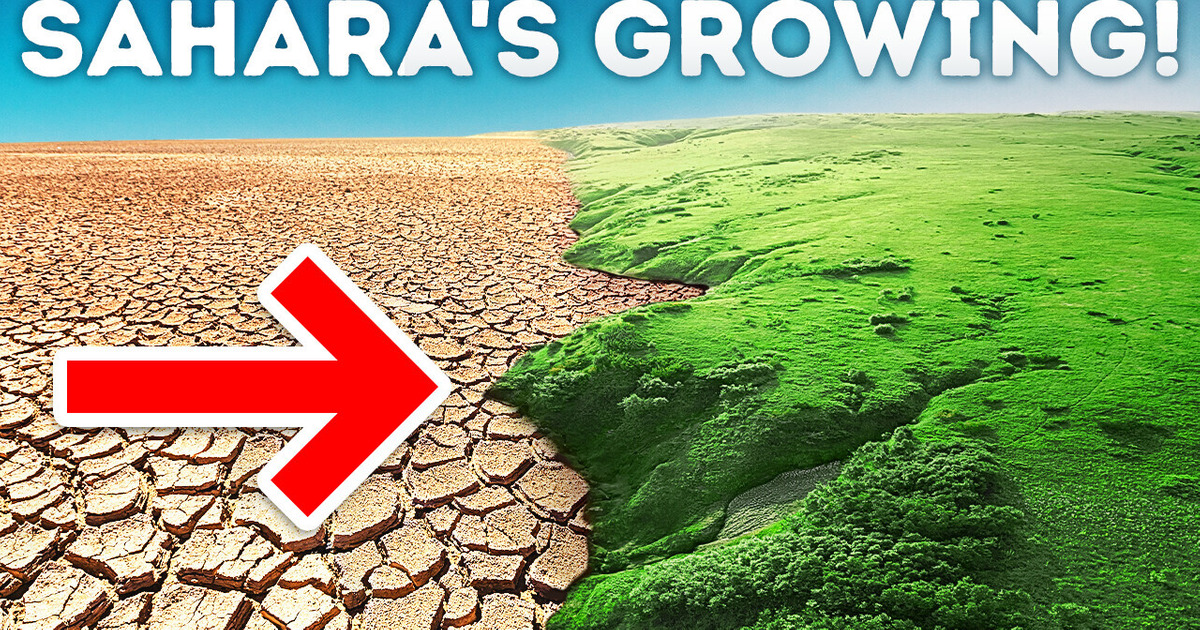
You find yourself in Africa. Land of unique wildlife, home to a great variety of cultures and languages, and, first and foremost, host to the world’s largest hot desert: the Sahara.
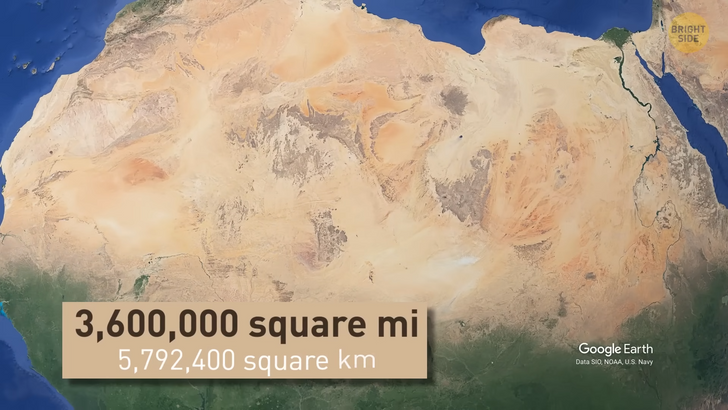
It’s daytime, and you are thirsty for some water and shade. You’ve been walking for days, trying to find one of those precious-looking oases. You feel you are near, but the horizon just keeps stretching and stretching. Your mind is tired, and your body is feeling all the heat. It’s like you’ve eaten a full plate of hot pepper and then some more, judging by how much you’re sweating. And when I say hot, think 100 degrees F hot, on average.
No wonder this is happening. After all, you find yourself in the world’s biggest hot desert. I say hot desert since the biggest deserted landscapes are actually the cold ones: located in Antarctica and the Arctic. Icy Antarctica’s frozen desert is more or less the size of 1 million LAXes. Yep, the Los Angeles International Airport.
The Arctic desert is just a bit smaller than that. Now, in case you don’t know, the Sahara Desert is located in Northern Africa, stretching from the Atlantic Ocean all the way over to the Red Sea. It occupies an area large enough to place approximately 100,000 Disney World Theme Parks side by side.
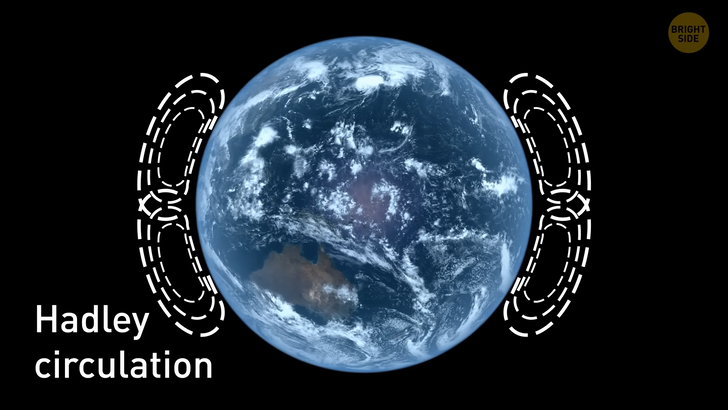
According to scientists, its boundaries are expanding. Deserts usually form in the subtropics because of what’s called Hadley circulation. The air rises at the equator and descends into the subtropics. This circulation of air has a drying effect which helps the formation of desert landscapes. Since the 1920s, the Sahara is considered to have expanded by over 10%. How is this happening?
Well, let’s start from the beginning. You probably know the Sahara Desert as one of the most inhospitable places on Earth today. Just FYI, for a place to be considered a desert, it has to receive less than 4 inches of rain per year. Due to the very small precipitation index, deserts are usually dry and arid places. There is little humidity in the air, and daytime temperatures can go as high as 130 degrees F.
Usually, there isn’t that much animal and plant life because of the lack of water. But in the Sahara’s case, it wasn’t always like that. It may be difficult to imagine Northern Africa without the tons of sand it has today. But about 20,000 years ago, the Sahara was actually one big oasis. Recent discoveries show clear evidence of what the scientists now call the Green Sahara. In the mid-1800s, a German explorer crossing the Sahara encountered some paintings and engravings that nomad artists had left behind. What he saw in those paintings looked nothing like his actual surroundings.
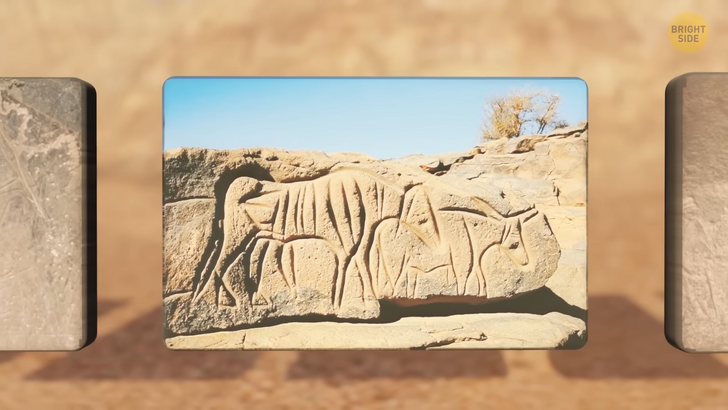
Instead of an arid landscape with only camels and desert vegetation, the rock paintings depicted jungle animals like giraffes and hippos. There were even images of livestock and grazing animals such as cattle and sheep — something that seems impossible for modern-day Sahara. Artists usually draw what they see around them, so this finding really intrigued the German explorer. The drawings were so detailed that the artists must have had close contact with those animals. You can find this rock art spread out in the Northern part of the African continent, from Western Sahara to Saudi Arabia.
Geologists soon took a keen interest in this and found the first clues to what this could mean. They have been able to confirm that, in fact, Northern Africa was once much wetter. They found evidence from nearby deep-sea sediment off the coast of Mauritania. Sampled cores of underwater sand and mud, also known as Saharan Dust Flux, showed geologists that, indeed, a Green Sahara was possible.
The more dust is blowing off of the desert and into the bottom of the ocean, the drier the climate in the region. The sediment cores show that there was much less dust — only half as much — coming off Northern Africa during the humid period. This period has to do with Earth’s natural cycles. Normally, the Earth rotates at a tilt of 23.5 degrees. But this angle is not constant and changes over time. Earth’s tilt is responsible for the amount of sunlight each hemisphere receives. It affects several ecosystem functions on the planet.
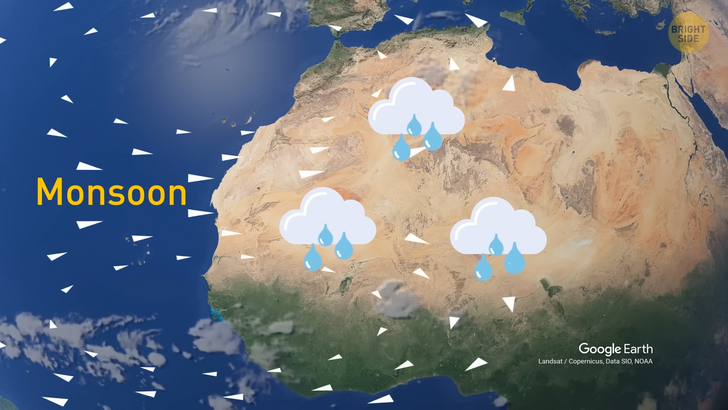
During the time of the Green Sahara, the Earth received between 4 and 8% more sunlight than it does today. So, when the Earth tilted about 20,000 years ago, the Northern Hemisphere received more direct sunlight, which affected humidity levels in the region. As the Northern Hemisphere got warmer, this affected monsoon activity. More specifically, the West African Monsoon.
Monsoons are wind systems that affect a region’s rainfall index and humidity levels. As a part of the globe gets warmer, it allows for more air to rise. It combines with the wind to draw moisture up into the atmosphere. Little by little, Northern Africa also became wetter. The increased moisture made the Sahara so wet that there were actual bodies of water in the region. As vegetation grew, the plants held onto moisture better than bare sand could.
There is evidence of natural basins throughout the Sahara and lakes so big they would fit all of the US’s Great Lakes inside of them. Archeologists uncovered evidence of vibrant societies in what are now arid areas. It looks like ancient cultures were able to take full advantage of the African Humid Period.
According to researchers, the human population peaked across the Sahara about 9,000 years ago. There are traces of fireplaces, hunting tools, fishhooks, and even mounds of fish bones. Records show that there have been over 230 green periods over the span of 8 million years. Solar radiation is always changing due to natural orbital cycles. That’s why Earth will most certainly see another Green Sahara moment. It might be thousands of years from now, but it will happen.
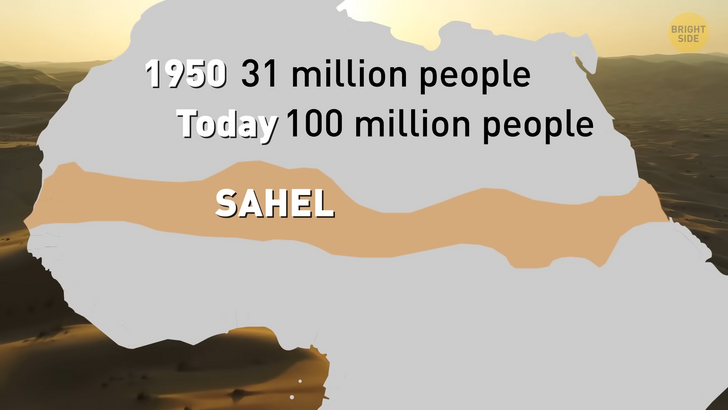
The same way the Sahara turns green, it turns yellow again — let’s put it like that. All it takes is a significant axial tilt and a few years of readjusting. However, another phenomenon is calling the attention of scientists now.
Recent studies by the National Science Foundation from the University of Maryland show the Sahara has expanded 10% over the past 90 years. This phenomenon is also called desertification, which literally means fertile land turning into desert land. The Sahara desert is now advancing into the semi-arid region of Sahel. In 1950, this region was home to 31 million people. Today, its population is over 100 million people. This rapid population growth has largely contributed to the Sahara’s expansion.
Farmers that were once nomads began settling down. Land usage grew more intense, aiding in weakening the soil. The demand for food has caused an overcropping of the land, so even more of it is turning into the desert now. The study also shows that natural climate cycles can affect rainfall in the Sahara and the Sahel.
Scientists affirm that all desserts fluctuate, not only the Sahara. A desert’s boundary may expand in the dry winter and contract during the wetter summer. South of the Sahara lies the Chad Basin. It is a natural body of water that now serves as an indicator of the Sahara’s expansion. The Chad Basin is located in the region where the Sahara is advancing southward.
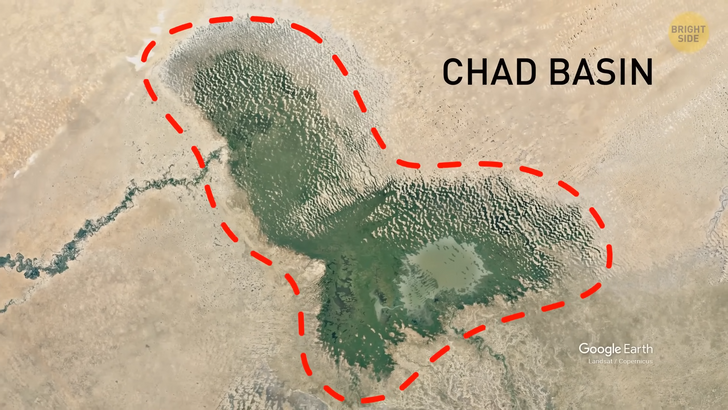
An atmospheric and ocean expert from the University of Maryland explains that rainfall has reduced greatly in the entire region. Due to reduced rainfalls, there is less water across the entire Basin, and even Chad Lake is drying out.
Just like the Sahara, the Atacama Desert in Chile, deemed the world’s driest, is also expanding. It is located north of the city of Santiago, and its southern border is expanding towards the Chilean capital. Because the climate is getting drier and drier here, the city of Santiago risks turning into an arid or semi-arid region itself. The once-fertile valleys of local rivers that lived on agriculture and livestock for many generations are losing their revenues as Chilean land is turning into a desert.
Since 2010, Santiago has received only a third of its average rainfall. Outside of the city, farmers are digging holes in search of ’blue gold’ or, simply put, water. The situation here is very similar to that of Sahel. So tell me this: were you as surprised as I was to find out what has been happening in the Saharan region? Feel free to share in the comments below.











